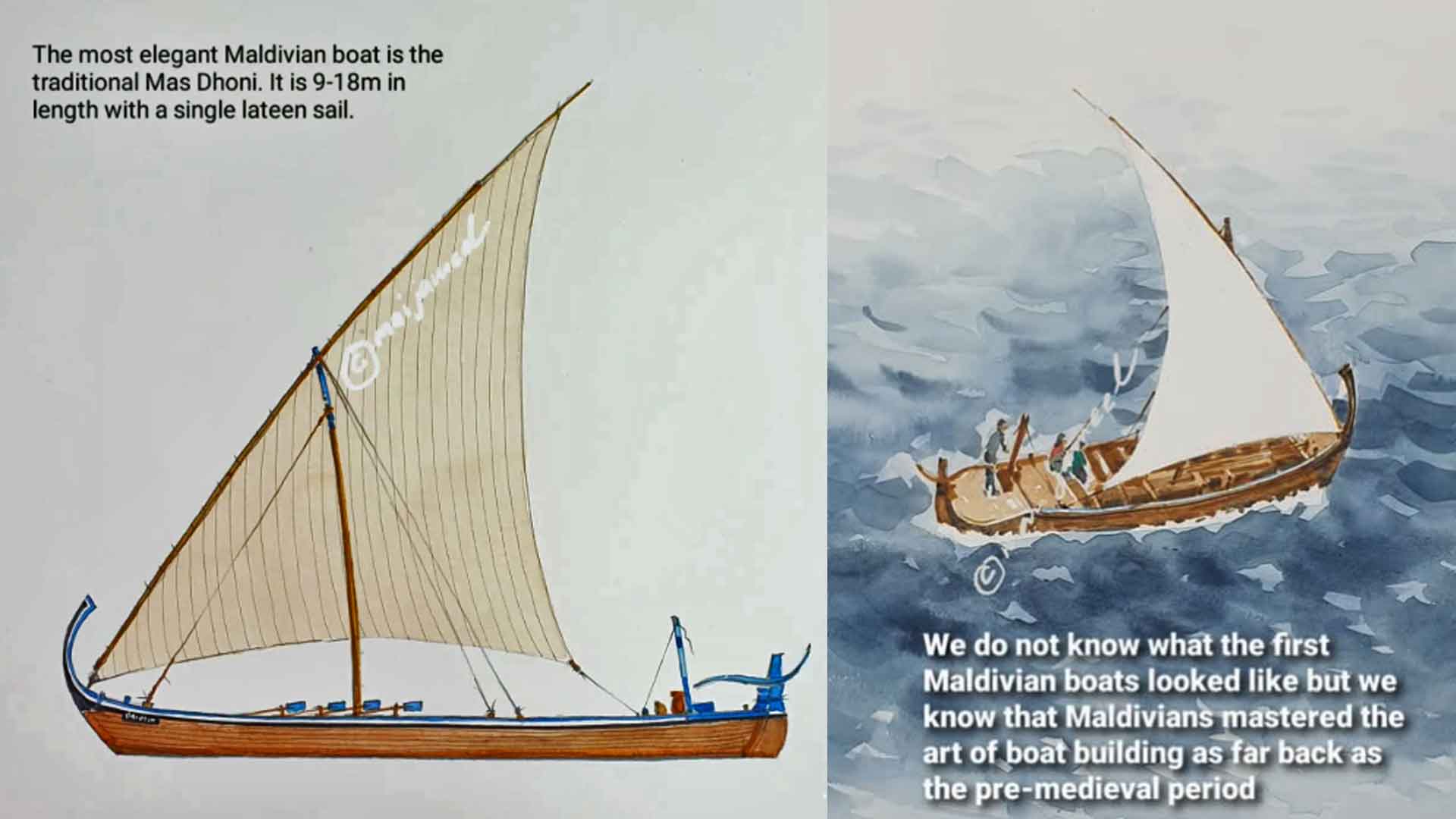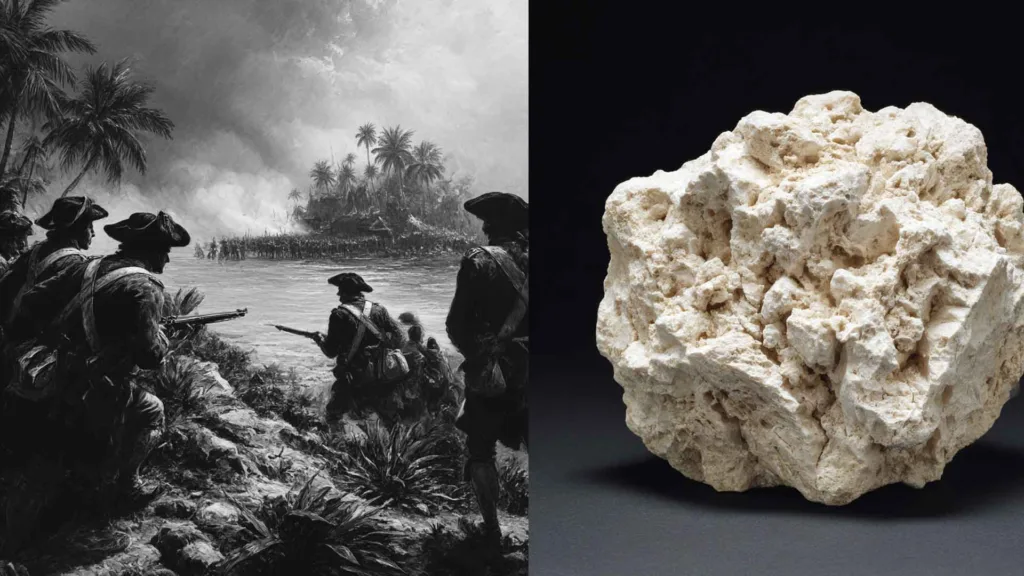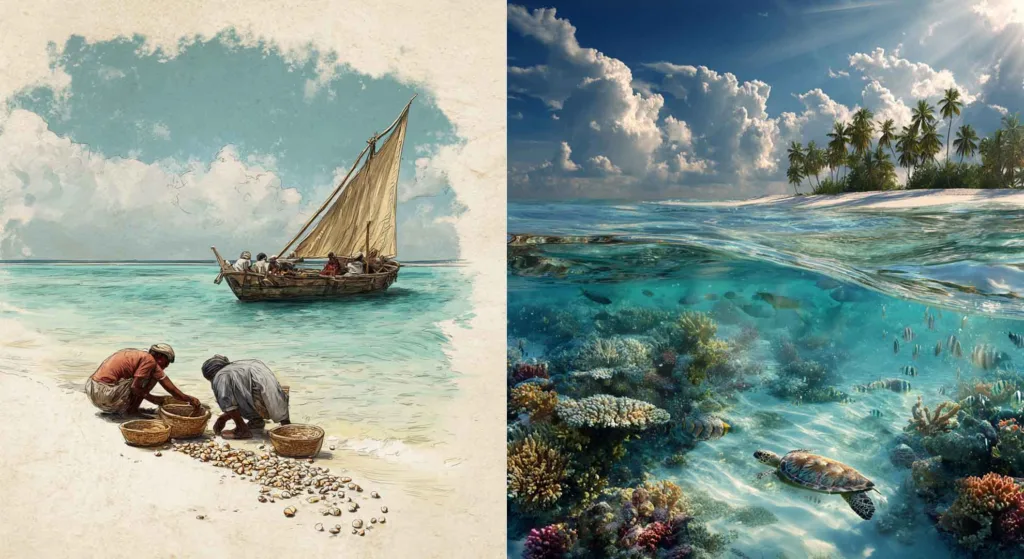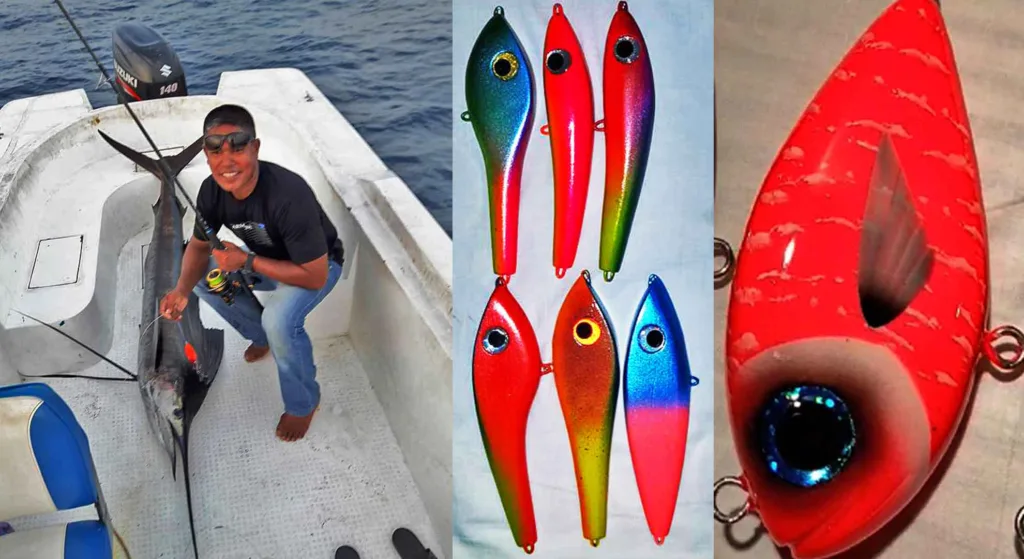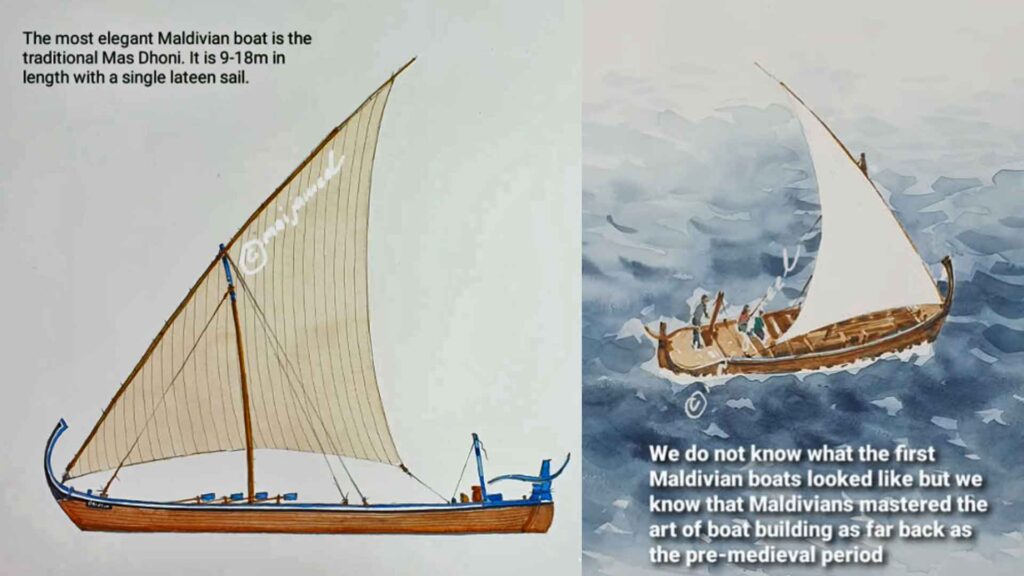
The construction of boats is another superb illustration of the Maldivians’ artistry and skill. The Dhoni, a traditional Maldivian sailboat, bears striking similarities to Arabian Dhows, demonstrating how important cultural blending is in forming Maldivian art and craft.
Craftsmen have been perfecting the dhoni for use as fishing vessels since ancient times, but some have been modified to be used as a means of transporting people and cargo between islands.
The fact that these boats were constructed without prior preparation or an overall blueprint adds to their intrigue. A head carpenter known locally as Maavadi oversees the creation of Dhoni and is tasked with determining its design and symmetry using his knowledge and observations.
Although boat building is a skill that has been passed down through the generations, the vessels have undergone several stages of development over time. Dhoni were manufactured entirely of various coconut tree components in the past. Coir, a natural fibre made from coconut husks, held the Dhoni’s planks together, while coconut wood was used to construct the vessel’s hull.
Copper rivets replaced coir and wooden pegs in the 16th century. Imported strong timber has now supplanted coconut wood, and sails have also evolved.
A more practical triangular lateen sail was substituted for the antiquated square sail composed of palm leaves. These sails were eventually replaced by diesel engines, but they are nevertheless kept on board in case the engine fails. Despite significant changes in boatbuilding techniques, the fundamental design and style have persisted to this day.
